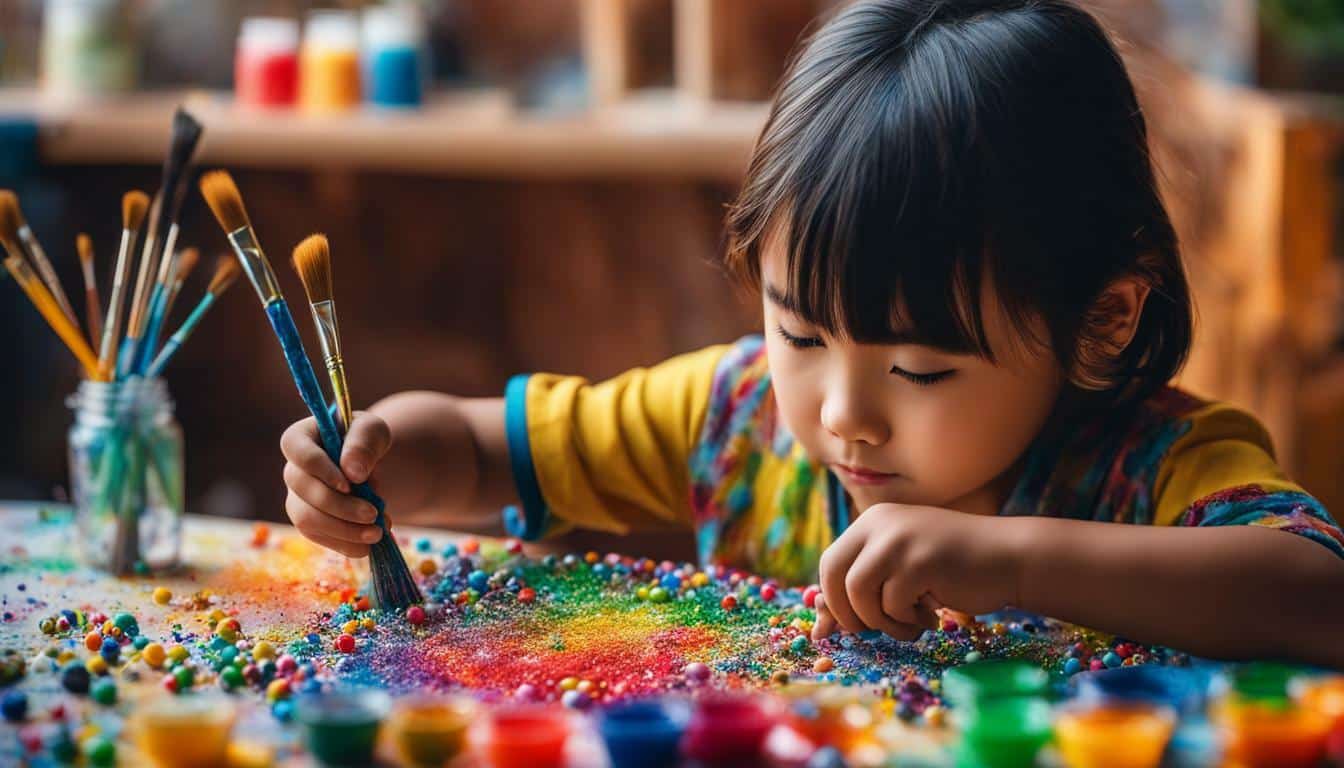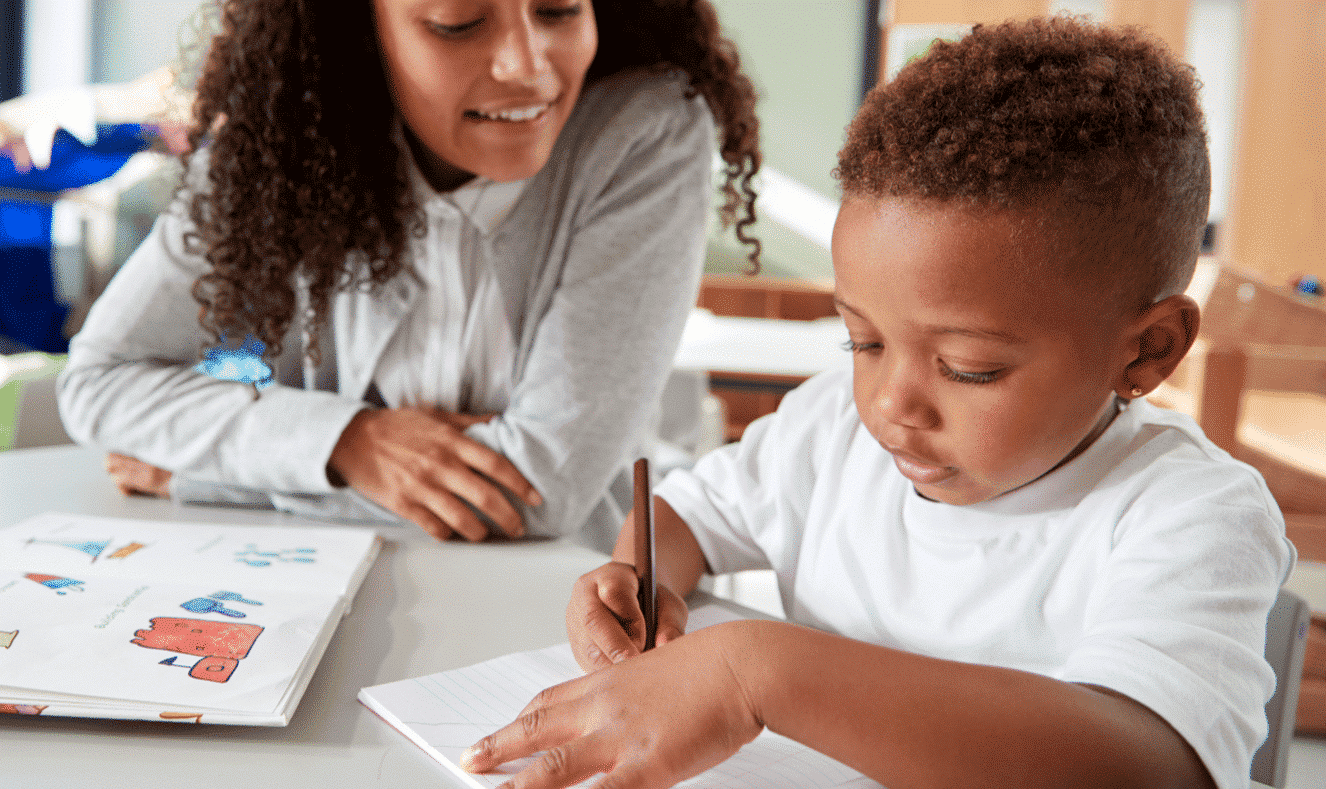The importance of hand-eye coordination in toddlers
As a parent, one of my primary goals is to foster the overall development of my toddler, including their cognitive, physical, and emotional growth. Hand-eye coordination plays a crucial role in this process, as it lays the foundation for various essential skills such as writing, drawing, and engaging in sports and other physical activities.
READ ALSO :
During the toddler years, children undergo rapid development in their motor skills, and activities that promote hand-eye coordination can significantly enhance their ability to control their movements and coordinate their hands and eyes effectively. This coordination is not only essential for everyday tasks but also contributes to their confidence and self-esteem as they experience success in mastering new skills.
By encouraging hand-eye coordination through engaging and fun activities, we can provide our toddlers with a solid foundation for future learning and skill development. One such activity that has proven to be both enjoyable and highly effective in boosting hand-eye coordination is finger painting.
What is finger painting and how it promotes hand-eye coordination
Finger painting is a delightful and messy art form that allows toddlers to explore their creativity while simultaneously developing their hand-eye coordination. Unlike traditional painting with brushes, finger painting encourages children to use their fingers, hands, and even their entire bodies to create vibrant and expressive artwork.
As toddlers engage in finger painting, they must coordinate their hand movements with their visual perception, guiding their fingers across the canvas or paper to create shapes, lines, and patterns. This process requires them to focus their eyes on the movements of their hands, fostering the connection between their visual and motor skills.
Moreover, finger painting encourages the use of both hands, promoting bilateral coordination, which is essential for tasks such as tying shoelaces, buttoning shirts, and using utensils. By involving both hands in the creative process, toddlers develop a stronger sense of coordination and control over their movements.
Benefits of finger painting for toddlers
Beyond enhancing hand-eye coordination, finger painting offers a multitude of benefits for toddlers’ overall development. Here are some of the key advantages:
- Sensory Exploration: Finger painting is a tactile experience that engages multiple senses, including touch, sight, and even smell. This sensory exploration helps toddlers understand textures, colors, and the properties of different materials, contributing to their cognitive and sensory development.
- Fine Motor Skills Development: As toddlers manipulate the paint with their fingers and hands, they strengthen their fine motor skills, which are essential for tasks such as grasping objects, holding utensils, and eventually writing and drawing.
- Creativity and Self-Expression: Finger painting provides a canvas for toddlers to express their creativity and emotions through colors, shapes, and textures. This freedom of self-expression can boost their confidence and encourage them to explore their imaginations.
- Stress Relief and Relaxation: The act of finger painting can be a calming and therapeutic activity for toddlers, helping them release stress and anxiety while promoting relaxation and mindfulness.
- Language and Communication Development: As toddlers engage in finger painting, they often narrate their actions, describe their creations, and communicate their thoughts and feelings, which supports their language and communication skills.
Safety tips for finger painting activities
While finger painting is a fun and engaging activity, it’s essential to prioritize safety to ensure a positive and worry-free experience for both you and your toddler. Here are some important safety tips to keep in mind:
- Use Non-Toxic Materials: Always opt for non-toxic, child-safe paints and materials specifically designed for toddlers. Avoid using household paints or materials that may contain harmful chemicals or toxins.
- Supervise Closely: Never leave your toddler unsupervised during finger painting activities. Toddlers may inadvertently ingest paint or materials, so it’s crucial to keep a watchful eye on them at all times.
- Protect Surfaces and Clothing: Cover surfaces with protective materials like plastic tablecloths or newspapers to prevent stains and messes. Consider having your toddler wear an apron or old clothing that can get messy without concern.
- Keep Paint Away from Eyes and Mouth: Discourage your toddler from putting their fingers near their eyes or mouth while finger painting. Gently remind them to keep their hands away from these areas to avoid accidental ingestion or eye irritation.
- Wash Hands Thoroughly: After the finger painting session, ensure that your toddler washes their hands thoroughly with soap and water to remove any residual paint or materials.
By following these safety guidelines, you can create a secure and enjoyable environment for your toddler to explore the wonders of finger painting while promoting their hand-eye coordination.
Basic finger painting techniques for toddlers
Before diving into creative finger painting ideas, it’s important to introduce your toddler to some basic techniques that will help them develop their hand-eye coordination and artistic skills. Here are a few fundamental techniques to start with:
- Finger Dragging: Encourage your toddler to drag their fingers through the paint, creating lines and shapes on the paper or canvas. This simple technique helps them practice controlling their finger movements and coordinating their hand and eye movements.
- Fingerprints: Have your toddler press their fingertips onto the paint and then onto the paper, creating unique fingerprint patterns. This activity not only promotes hand-eye coordination but also introduces them to the concept of patterns and textures.
- Handprints: Guide your toddler in making handprints on the paper or canvas by gently pressing their hand onto the paint and then onto the surface. This technique encourages the use of their entire hand and helps develop their overall hand-eye coordination.
- Mixing Colors: Provide your toddler with a few different colors of paint and encourage them to mix and blend the colors together using their fingers. This activity not only enhances their hand-eye coordination but also introduces them to color theory and the concept of creating new colors.
- Texture Creation: Introduce different textures and materials, such as sand, salt, or even shredded paper, and encourage your toddler to incorporate them into their finger paintings. This technique helps them explore different tactile sensations while developing their hand-eye coordination.
Remember, the key is to start simple and let your toddler explore at their own pace. Celebrate their efforts and provide encouragement throughout the process, as this will foster their confidence and enthusiasm for finger painting.
Fun and creative finger painting ideas for promoting hand-eye coordination
Now that we’ve covered the basics, it’s time to unleash your toddler’s creativity with some fun and engaging finger painting ideas that will not only promote hand-eye coordination but also provide hours of artistic exploration and enjoyment. Here are some fantastic ideas to try:
- Nature Scenes: Encourage your toddler to create nature-inspired scenes using their fingers. They can paint trees, flowers, animals, and landscapes, incorporating various colors and textures. This activity helps them develop their hand-eye coordination while also fostering an appreciation for the natural world.
- Handprint Animals: Turn your toddler’s handprints into adorable animal characters. Guide them in creating the body shapes with their handprints and then use their fingers to add details like eyes, ears, and tails. This activity combines hand-eye coordination with creativity and storytelling.
- Alphabet Painting: Introduce your toddler to the letters of the alphabet by having them finger paint each letter on a separate piece of paper or canvas. This activity not only promotes hand-eye coordination but also supports early literacy skills.
- Textured Paintings: Incorporate different textures into your finger painting sessions by using materials like sand, salt, or even shredded paper. Encourage your toddler to create unique patterns and textures by pressing these materials into the paint and onto the surface. This activity engages their senses while challenging their hand-eye coordination.
- Finger Painting Puzzles: Create simple puzzle pieces by cutting cardboard or thick paper into different shapes. Have your toddler finger paint each puzzle piece, and then challenge them to reassemble the puzzle by matching the painted pieces together. This activity combines hand-eye coordination with problem-solving skills.
- Finger Painting Stories: Encourage your toddler to create a series of finger paintings that tell a story. Guide them in creating characters, settings, and actions using their fingers and different colors of paint. This activity not only promotes hand-eye coordination but also supports their imagination and storytelling abilities.
- Finger Painting Prints: Use your toddler’s finger paintings to create unique prints on fabric or paper. Simply press the painted surface onto a clean piece of fabric or paper to transfer the design. This activity not only enhances hand-eye coordination but also introduces the concept of printmaking and pattern creation.
Remember, the key to successful finger painting sessions is to let your toddler take the lead and explore their creativity freely. Provide guidance and encouragement, but avoid being overly prescriptive or restrictive. The more enjoyable and engaging the experience is, the more your toddler will develop their hand-eye coordination and artistic skills.
Incorporating different textures and materials in finger painting
One of the most exciting aspects of finger painting is the ability to incorporate various textures and materials into the creative process. By introducing different tactile elements, you not only enhance your toddler’s sensory experience but also challenge their hand-eye coordination in new and engaging ways. Here are some ideas to explore:
- Textured Papers: Instead of using plain paper or canvas, try incorporating textured papers like construction paper, corrugated cardboard, or even sandpaper. These different surfaces will create unique textures and patterns as your toddler finger paints on them, requiring them to adjust their hand movements and pressure.
- Household Items: Repurpose common household items like sponges, bubble wrap, or even crumpled foil as stamping tools. Guide your toddler in dipping these items into the paint and pressing them onto the surface, creating interesting textures and patterns. This activity encourages creativity while promoting hand-eye coordination.
- Natural Materials: Incorporate natural materials like leaves, twigs, or even seashells into your finger painting sessions. Encourage your toddler to use these materials as stamps or to create patterns and textures by pressing them into the paint and onto the surface.
- Fabric and Textiles: Experiment with finger painting on different fabrics like canvas, muslin, or even old t-shirts. The varying textures of these materials will provide a unique sensory experience for your toddler and challenge their hand-eye coordination in new ways.
- Edible Paints: For a fun and safe alternative, consider making edible finger paints using ingredients like yogurt, pureed fruits, or even pudding. These edible paints not only offer a different texture but also allow your toddler to explore their senses of taste and smell while creating their masterpieces.
- Sensory Bags: Create sensory bags by filling ziplock bags with paint and various textured materials like beads, rice, or even shredded paper. Seal the bags tightly and encourage your toddler to manipulate the contents with their fingers, creating unique patterns and textures without the mess.
Remember, the key to incorporating different textures and materials is to provide a safe and supervised environment for your toddler to explore. Always ensure that the materials you use are non-toxic and age-appropriate, and closely monitor your toddler’s interactions to prevent any potential hazards.
Finger painting games and activities to enhance hand-eye coordination
Finger painting doesn’t have to be a solitary activity – there are plenty of engaging games and activities that you can incorporate to make the experience even more fun and interactive for your toddler. These games not only enhance hand-eye coordination but also promote social skills, problem-solving abilities, and overall cognitive development. Here are some exciting ideas to try:
- Finger Painting Twister: Create a colorful twist on the classic Twister game by painting different shapes or colors on a large canvas or floor mat. Call out instructions for your toddler to place their hands or feet on specific colors or shapes, challenging their hand-eye coordination and balance.
- Finger Painting Scavenger Hunt: Hide various objects or pictures around the room and have your toddler search for them by following a trail of finger-painted clues. This activity encourages problem-solving skills while promoting hand-eye coordination as they navigate the clues.
- Finger Painting Matching Game: Create pairs of identical finger paintings and have your toddler match them up. This activity not only enhances hand-eye coordination but also supports memory and pattern recognition skills.
- Finger Painting Obstacle Course: Set up a simple obstacle course using household items, and have your toddler navigate through it while carrying a finger painting creation. This activity combines hand-eye coordination with gross motor skills and balance.
- Finger Painting Freeze Dance: Play some lively music and encourage your toddler to dance and move around while finger painting. When the music stops, they must freeze in place, challenging their ability to control their movements and coordinate their hands and eyes.
- Finger Painting Follow the Leader: Take turns being the leader, creating finger painting designs or patterns that your toddler must follow and replicate. This activity promotes hand-eye coordination while also encouraging observation and imitation skills.
- Finger Painting Storytelling: Create a collaborative finger painting story by taking turns adding elements or characters to a shared canvas. This activity not only enhances hand-eye coordination but also fosters creativity, imagination, and turn-taking skills.
Remember, the key to making these games and activities successful is to keep them fun, engaging, and age-appropriate. Encourage your toddler’s participation and celebrate their efforts, as this will foster a positive association with finger painting and promote a love for creative exploration.
Finger painting tools and supplies for toddlers
To ensure a successful and enjoyable finger painting experience for your toddler, it’s important to have the right tools and supplies on hand. Here are some essential items to consider:
- Washable Paints: Invest in high-quality, non-toxic, and washable paints specifically designed for toddlers. Look for paints that are easy to clean and won’t stain clothing or surfaces.
- Painting Surface: While paper or canvas are classic choices, you can also explore alternative surfaces like large cardboard sheets, chalkboards, or even the bathtub (with proper precautions).
- Smocks or Aprons: Protect your toddler’s clothing by providing a smock or an old, oversized t-shirt or apron that can get messy without concern.
- Painting Trays or Palettes: Use shallow trays or palettes to contain the paint and prevent spills. You can also repurpose items like aluminum foil trays or plastic lids for this purpose.
- Brushes and Stamping Tools: While finger painting primarily involves using hands and fingers, you can also introduce brushes, sponges, or other stamping tools to create different textures and effects.
- Clean-up Supplies: Have plenty of paper towels, baby wipes, and a designated cleaning area ready for quick and easy clean-up after the painting session.
- Storage Containers: Invest in airtight containers or resealable bags to store unused paint and extend its shelf life.
- Protective Coverings: Protect surfaces by using plastic tablecloths, newspapers, or old sheets to catch any spills or splatters.
- Sensory Materials: Explore different textures by incorporating materials like sand, salt, beads, or even shredded paper into your finger painting sessions.
- Art Display: Set aside a designated area or a bulletin board to display and celebrate your toddler’s finger painting masterpieces.
Remember, safety should always be a top priority when selecting finger painting supplies. Opt for non-toxic, child-safe materials and closely supervise your toddler during the activity to ensure a secure and enjoyable experience.
Encouraging and nurturing creativity through finger painting
While finger painting is an excellent way to promote hand-eye coordination in toddlers, it also provides a unique opportunity to encourage and nurture their creativity. As parents, we can play a vital role in fostering an environment that supports and celebrates our toddler’s artistic expression. Here are some tips to help you nurture their creativity through finger painting:
- Embrace the Process, Not the Product: Instead of focusing on the final outcome or the “perfect” artwork, celebrate the process of exploration and discovery. Encourage your toddler to experiment with colors, textures, and techniques without fear of making mistakes.
- Provide Open-Ended Materials: Offer a variety of materials and tools that allow for open-ended exploration and creativity. Avoid overly structured or prescribed activities that limit your toddler’s imagination.
- Encourage Self-Expression: Encourage your toddler to express their thoughts, feelings, and ideas through their finger paintings. Ask them to describe their creations and validate their unique perspectives and interpretations.
- Offer Positive Reinforcement: Provide positive reinforcement and praise for your toddler’s efforts, creativity, and willingness to try new things. This will boost their confidence and encourage them to continue exploring their artistic abilities.
- Collaborate and Share Ideas: Engage in collaborative finger painting sessions with your toddler, sharing ideas and techniques while allowing them to take the lead. This collaborative approach not only strengthens your bond but also demonstrates that creativity is a shared experience.
- Display Their Artwork: Create a dedicated space or gallery to display your toddler’s finger painting creations. This not only validates their efforts but also encourages them to take pride in their artistic accomplishments.
- Introduce Different Styles and Techniques: Expose your toddler to various artistic styles and techniques by sharing books, videos, or even visiting art galleries or museums. This exposure can inspire them to explore new ideas and approaches in their own finger painting sessions.
- Encourage Storytelling: Ask your toddler to narrate the stories or ideas behind their finger paintings. This not only fosters their imagination but also supports their language and communication skills.
- Celebrate the Process: Embrace the messy and unpredictable nature of finger painting. Celebrate the joy of exploration and the process of creating, rather than focusing solely on the final product.
- Be a Role Model: Engage in your own creative pursuits and share your passion for art and self-expression with your toddler. By modeling a positive attitude towards creativity, you inspire them to embrace their own artistic talents and interests.
Remember, nurturing creativity is not about creating masterpieces; it’s about providing a safe and supportive environment where your toddler can explore, experiment, and express themselves freely. By encouraging their creativity through finger painting, you not only promote hand-eye coordination but also foster a lifelong love for artistic expression and self-discovery.
Finger painting as a sensory activity for toddlers
In addition to promoting hand-eye coordination and creativity, finger painting offers a rich sensory experience for toddlers. Engaging multiple senses during this activity can have profound benefits for their overall development, including cognitive, emotional, and social growth. Here’s how finger painting can stimulate your toddler’s senses:
- Touch: The tactile sensation of running their fingers through the paint and feeling the different textures on the canvas or paper is a powerful sensory experience. This sensory input helps toddlers develop their sense of touch and understand various textures and materials.
- Sight: The vibrant colors and visual patterns created during finger painting stimulate your toddler’s sense of sight. This exposure to colors and shapes can enhance their visual perception and support their cognitive development.
- Smell: Some paints may have a distinct scent, which can engage your toddler’s sense of smell. You can also incorporate natural materials like spices or herbs into the paint to create unique scents, further enhancing the sensory experience.
- Sound: Encourage your toddler to make sounds or describe the sensations they experience during finger painting. This verbal expression not only supports language development but also engages their sense of hearing.
- Taste: While it’s important to discourage the ingestion of paint, you can introduce edible finger paints made from natural ingredients like yogurt or pureed fruits. This allows your toddler to safely explore their sense of taste while creating art.
By engaging multiple senses during finger painting, you provide your toddler with a rich sensory experience that can support their overall development. This sensory exploration can help them better understand and process the world around them, while also promoting their hand-eye coordination and creative expression.
Additionally, sensory activities like finger painting can be particularly beneficial for toddlers with sensory processing disorders or developmental delays. The tactile and visual stimulation can help regulate their sensory systems and provide a calming and therapeutic experience.
To enhance the sensory experience during finger painting sessions, consider incorporating various textures, scents, and materials. You can also encourage your toddler to describe the sensations they feel, fostering their language skills and sensory awareness.
RELATED ARTICLE :
Conclusion
Finger painting is a delightful and multifaceted activity that offers numerous benefits for toddlers’ development, particularly in the realm of hand-eye coordination. By encouraging your toddler to engage in this creative pursuit, you not only foster their motor skills and visual-spatial awareness but also nurture their creativity, self-expression, and sensory exploration.
Throughout this article, we’ve explored a wide range of fun and engaging finger painting ideas, techniques, and activities that can make this experience even more enriching for your toddler. From nature scenes and handprint animals to textured paintings and sensory bags, the possibilities are endless.
Remember, the key to successful finger painting sessions is to create a safe and supportive environment where your toddler can freely explore and express themselves without fear of making mistakes. Embrace the process, celebrate their efforts, and encourage their curiosity and imagination.
Finger painting is not just a messy art form; it’s a powerful tool for promoting your toddler’s overall development. By incorporating these activities into your routine, you’ll not only strengthen their hand-eye coordination but also foster a love for creativity, self-expression, and a lifelong appreciation for the arts.
Unlock your toddler’s artistic potential and nurture their hand-eye coordination with our comprehensive guide to finger painting. Explore our collection of engaging ideas, techniques, and activities designed to make this creative journey fun and rewarding for both you and your little one. Visit our website today and embark on a vibrant adventure filled with colors, textures, and endless possibilities for growth and discovery.






